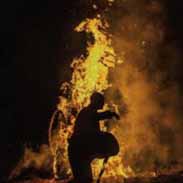Ionic Compounds definitions – Flashcards
Unlock all answers in this set
Unlock answersquestion
| Octet Rule |
answer
| The tendency for atoms to gain or lose electrons in order to fill their s and p orbitals and become stable. |
question
| Ion |
answer
| An atom or group of atoms (like a polyatomic ion) with a positive or negative charge. |
question
| Cation |
answer
| A positively charged ion. Appears first in an ionic compound. |
question
| Anion |
answer
| A negatively charged ion. Appears last in an ionic compound. |
question
| Lattice energy |
answer
The energy given off when one mole of ions of an ionic compound form the crystal lattice. This is also the amount of energy it takes to break one mole of bonds in a crystal lattice. One mole of atoms is 6.022 x 1023 atoms. |
question
| Crystal lattice |
answer
| The alternating cation & anion structure of an ionic compound. |
question
| Formula unit |
answer
| The simplest ratio of the crystal lattice. |
question
| Isoelectronic |
answer
| Having the same electron configuration as another atom or ion. Usually this is discussed when an atom becomes an ion and achieves the electron configuration of a noble gas. |
question
| Electroneutrality |
answer
| Having an equal number of positive and negative charges; therefore the compound is neutral. |
question
| Subscript |
answer
The number below an atoms symbol which designates how many atoms are in a compound. Ex: MgCl2 |
question
| Superscript |
answer
| The charge that follows an atom; it is raised. Cu+2 |
question
| Polyatomic ion |
answer
| A group of nonmetals that has gained or lost a(n) electron(s) and has a charge. |
question
| Binary Ionic Compound |
answer
| Binary means two, so it's a compound that contains exactly two elements, therefore no polyatomic ions. Ex MgCl2 |
question
| Ionic compound (salt) |
answer
| A compound consisting of cations and anions and held together by the attraction of the oppositely charged ions. |



